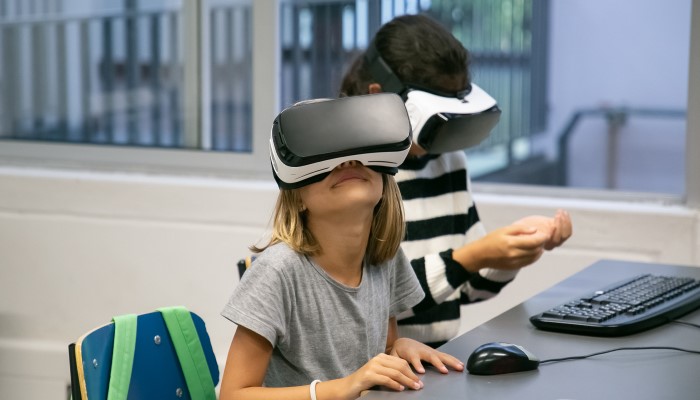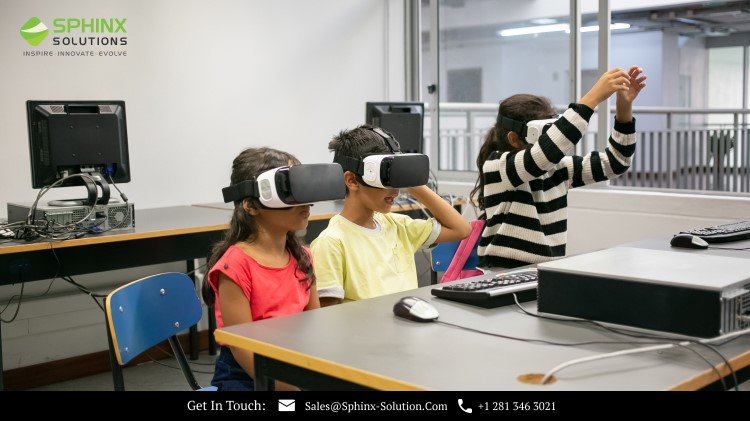Technological advancement keeps moving forward consistently. It possesses almost all stages of our life. Technology helps us to optimize our daily routine, make processes seamless & productive, and provide more time for personal life. Wearable technology is a great example of technological advancement. The application of wearables is different, based on the categories they belong to.
We, Sphinx Solutions, believe that wearable technology in education will take the way of learning to the next level in the upcoming years. No doubt, this is an engaging educational tool that allows students to obtain more information and data about several topics. Keep reading to know more about the key benefits of wearable technology and examples.
Advantages of wearable technology in education
Wearable tech development services bring a new way that helps to enhance learning outcomes. Moreover, wearable learning helps to explore the advancement of technologies in education and allows students to focus on more innovative and interesting tasks. Here are 4 major benefits of wearable technology in the education sector.
- Offers an engaging learning environment
Another significant benefit of wearable technology is that it provides a highly engaging learning environment. For instance, VR gadgets allow students to work on science experiments without visiting any location or stepping into the laboratory. It’s a unique approach to learning by which students can enjoy a smart learning experience at home or in class.
- Helps to collect data & track students’ performance
Wearable technology not only helps students but also allows teachers to monitor their student’s performance in several learning environments. For example, they can track the pressure and tension levels of students during a class test. The data collection enables administrators & teachers to personalize the learning environment. This means teachers utilize data to make the environment more enjoyable.
- Reduces learning time
Students use a number of wearable gadgets to access information online. Teachers can also network their gadgets to make accurate presentations for their students. All of these minimize the time taken to finish a learning session or an assignment because the materials for learning are available or accessible to the students. Moreover, less study time helps to complete more content. This minimizes stress and makes learning very enjoyable. Reduced study time allows the class to cover more content. It will reduce learning stress and make studying enjoyable.
- Enhances productivity
Wearables come with a vast range of unique features that offer high productivity. Technically, when data or information is paired with metrics, quotas, and goals, it becomes easy to understand that eating, learning, and sleeping habits have a huge impact on performance. In addition, students easily achieve their potential if the learning environment is productive.
Applications of wearable technology in education

Wearable technology plays a big role in taking the entire educational domain to the next level. This technology can enhance student engagement and maximize the quality of student-teacher communication. Take a look at a few wearable technology examples & how they are beneficial in the classroom.
- Smart glasses: This is a hand-free wearable tech device that makes the learning process more engaging and smoother. This is also called Google glass which helps to take calls, perform voice commands, record & save AV content, etc. Students can also use these glasses to
- Bookmark important passages
- Take notes
- Look at additional classroom content given by the teacher or professor
- Get a VR experience on the athletic fields
- Smartwatches: A smartwatch is one of the most popular wearable tech devices that has a profound impact in many areas. In educational fields, smartwatches help to record lectures, tests, and compendiums, send voice messages and notes and track daily activities, steps, calorie burn, pulse rates, etc. Moreover, innovative education applications, these devices also allow students to

- Learn more languages
- Play games
- Enhance memory capacity
- GoPro: GoPro is a small personal HD camera that helps students to explore and research. This is compact, portable, and easy to mount, therefore, students can use it to record live classes and take pictures for projects or presentations. GoPro is one of the best choices for modern classrooms. However, it’s important to keep your GoPro up-to-date to get the best performance with the latest features.

- VR devices: Virtual reality is an emerging technology that gives students a real-life and a fresh perspective experience of innovative things. VR experiences enhance learning outcomes & allow students to develop interpersonal skills like collaboration, empathy & social skills required for their future. Virtual reality devices like VR headsets create a modern and smart learning environment. For instance, ThingLink is a virtual reality course for students that helps them to travel across the world.

Final words
The adoption of wearable technologies in educational institutions is rapidly increasing. It not only enhances student learning outcomes but also accesses education calmly, flexibly, and seamlessly. Modern industries are also advancing into wearable app development solutions. What possibilities & upcoming trends do you see for this technology in education? Share with us.
Moreover, if you would like to expand your business through custom software development, talk to our experts. We at Sphinx Solutions help you transform your business capabilities with diversified software technology.
